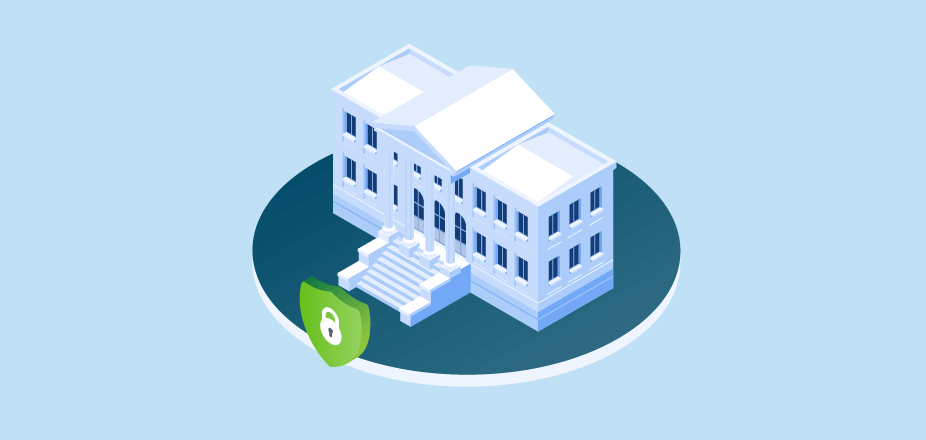What is Zero Trust data security?
Zero Trust data security is a cybersecurity tenet that assumes no actor, system, network, or service near a security perimeter is to be trusted. Moreover, it posits that any and everything attempting to establish access to the users, assets, and resources of a security perimeter must validate identity and authenticity to gain access to this secure perimeter.
This is all in an effort to mitigate cybercriminals or malicious insiders who target data stores and other resources on a network or platform. Zero Trust data security emphasizes a shift from “trusted networks” to the least-principle concept that no network or platform may be implicitly considered secure and that all traffic on the network or platform must be encrypted and authenticated at the earliest opportunity.
Why is Zero Trust data security important?
Zero Trust data security is highly important as cybercriminals and ransomware attacks have exponentially increased. Norton reported more than 2,200 cyberattacks a day in 2021. Then, a company’s network or platform was expected to be a victim every 11 seconds. Attacks during 2022 were predicted to occur every 2 seconds, according to Cybersecurity Ventures.
Cybercriminals steal data as part of fraud, identity theft, and extortion campaigns. One erroneous user click can result in the infiltration of malware, causing organizations to lose customer trust or revenue as well as disrupt their organization’s operations.
What is meant by Zero Trust Security?
Zero Trust Security means that all network traffic must follow the tenet of “never trust, always verify” coined by John Kindervag of Forrester—even if the devices or users in question belong to the organization’s network or have been previously verified.
This approach to cybersecurity creates a defensible architecture for organizations working to simultaneously:
- Protect against cyberattacks
- Keep data secure
- Ensure organizational objectives are achieved
What are the three stages of the Zero Trust security model?
The three stages of the Zero Trust security model are:
- Data resiliency — The data resiliency stage of the Zero Trust security model requires that all data be encrypted and immutable copies of the data must exist in order that data be better protected and more easily recovered in the event of a disaster or attack.
- Data access — The access control stage enables precise control over who may access or modify an organization’s data and network, through multifactor authentication (MFA) and granular role-based access controls (RBAC).
- Detection and analytics — This stage ensures that an organization’s data is continuously monitored and analyzed in order to detect attacks and compromised workloads, often using AI/ML models to monitor intelligence about data and anticipate ransomware attacks or insider threats.
What is an example of Zero Trust?
An example of Zero Trust data protection is multifactor authentication, or MFA. This strong cybersecurity capability requires users requesting system or data access to both prove they “know something” and to “have something.”
For example, individuals might be required to identify themselves through the authentication of login requests with a password and a response such as a mobile phone prompt or a time-based one-time password (TOTP). MFA allows organizations to prevent unauthorized access and changes to platform settings and data, helping to alleviate the potential for brute-force cyberattacks, such as stolen passwords and usernames.
What are the Zero Trust principles?
Zero Trust principles follow the tenet of “never trust, always verify” that John Kindervag of Forrester introduced. Furthermore, they dictate that an organization must explicitly verify those attempting to access or modify any of its data, services, or networks. They also follow least-privileged access which limits employees’ access strictly to what they need to do their jobs in the organization. Finally, they assume the worst-case scenario, which is a breach which is why verifying every request for access is done as though the request originated from an open network. Together, these deliver significant Zero Trust security benefits.
What technologies does Zero Trust require?
Zero Trust requires various technologies, including multifactor authentication (MFA), role-based access controls (RBAC), Quorum, auditing, and continuous monitoring. MFA technology helps to prevent unauthorized access and changes to an organization’s platform or network by requiring users to identify themselves through more than a mere password and username.
RBAC technology allows organizations to grant least-privilege access or limit users’ access strictly to that which is necessitated by their job or role in the organization.
Quorum technology prevents unilateral changes to an organization’s platform to mitigate the effects of user error, rogue administration, and compromised accounts.
Auditing technology enables organizations to document all actions that occur on the organization’s platform or network files so they can be produced in the event of an investigation.
Finally, continuous monitoring technology works to minimize the risk of human error and misconfigurations by monitoring the environment of an organization’s platform or network.
Cohesity and Zero Trust data security
Cohesity aligns with and enhances the principles of Zero Trust Security by providing users with multiple points of protection through the Cohesity Data Cloud. The platform couples data security and management with highly secure data mobilization and configuration to detect anomalies and safeguard data across multiclouds, on-premises, and edge computing environments. Cohesity Threat Defense merges active threat intelligence and data backups with immutable capacity and isolation capabilities to deliver a proactive approach to cybersecurity that strengthens cyber resilience.
Specifically, Cohesity Zero Trust Security empowers organizations to preserve brands and keep businesses running:
- Reduce attack surfaces — Consolidate vulnerable infrastructure silos onto one secure, scalable platform.
- Rapidly recover from ransomware — Benefit from immutable snapshots. Detect suspicious activity with AI/ML, and in the worst case scenario, rapidly restore in minutes.
- Speed security ecosystem integrations — Take advantage of pre-built integrations and apps from leading 3rd-party security partners that help keep the bad actors at bay.









